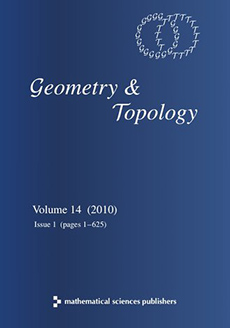Abstract
We give new information about the relationship between the low-dimensional homology of a space and the derived series of its fundamental group. Applications are given to detecting when a set of elements of a group generates a subgroup “large enough” to map onto a nonabelian free solvable group, and to concordance and grope cobordism of classical links. We also greatly generalize several key homological results employed in recent work of Cochran–Orr–Teichner in the context of classical knot concordance.
In 1963 J Stallings established a strong relationship between the low-dimensional homology of a group and its lower central series quotients. In 1975 W Dwyer extended Stallings’ theorem by weakening the hypothesis on . In 2003 the second author introduced a new characteristic series, , associated to the derived series, called the torsion-free derived series. The authors previously established a precise analogue, for the torsion-free derived series, of Stallings’ theorem. Here our main result is the analogue of Dwyer’s theorem for the torsion-free derived series. We also prove a version of Dwyer’s theorem for the rational lower central series. We apply these to give new results on the Cochran–Orr–Teichner filtration of the classical link concordance group.
Citation
Tim D Cochran. Shelly L Harvey. "Homology and derived series of groups II: Dwyer's Theorem." Geom. Topol. 12 (1) 199 - 232, 2008. https://doi.org/10.2140/gt.2008.12.199
Information





